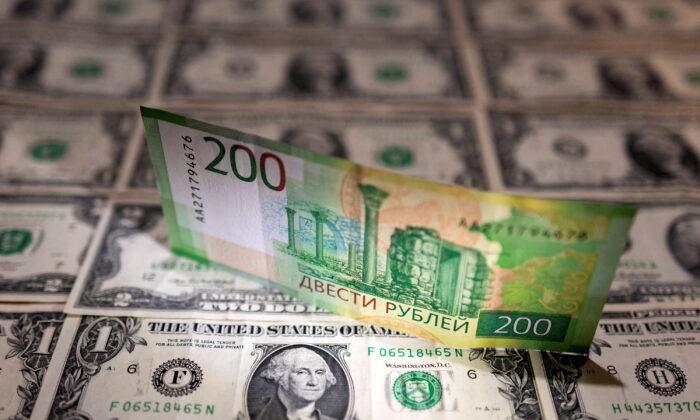The Russian rouble swung slightly in light trading in Moscow on Friday, stabilizing near the psychologically important threshold of 100 to the dollar after the central bank opted to hold rates at 20 percent and said it would start purchasing OFZ government bonds.
The central bank kept its key interest rate unchanged on Friday, as predicted in a Reuters poll of analysts, following an emergency rate hike in late February designed to support financial stability, but warned of higher inflation and an economic contraction this year, without giving new forecasts.
Governor Elvira Nabiullina, who was nominated for another term by President Vladimir Putin earlier on Friday, said the bank would begin buying OFZ bonds when the Moscow Exchange resumes trading those papers on Monday, hoping to limit volatility.
Trading on the stock market section on the Moscow Exchange has been closed since Feb. 28, but currency trading has continued, with the rouble crashing to an all-time low of 120 against the greenback on March 6.
By 14:56 GMT, the rouble was 1.1 percent weaker against the dollar at 104.30 after earlier firming to 101.70, a level last seen on March 4. Against the euro, the rouble gained 0.9 percent to 114.73, small moves compared to recent wild swings.
The rouble eased in the hours after the rate decision, but began firming again after the central bank’s OFZ announcement.
Coupon Payment
The rouble showed limited reaction to an indication that Russia had averted a default on its Eurobonds, after it paid interest due on two sovereign dollar bonds.Failure to pay could have led to Russia’s first external bond default in more than a century and was seen as a key test after the imposition of hefty Western sanctions.
Those sanctions have hit the rouble in the last few weeks, as has increased demand for foreign currency that prompted the central bank to ban the selling of cash dollars and euros to individuals at banks’ offices.
A month ago, the Russian currency traded at around 76 to the dollar and 85 to the euro.
Russia sent tens of thousands of troops into Ukraine in late February in what it called a special operation to degrade its southern neighbor’s military capabilities and root out people it called dangerous nationalists.
Ukrainian forces have mounted stiff resistance and the West has imposed sweeping sanctions on Russia in an effort to force it to withdraw its forces.






Friends Read Free